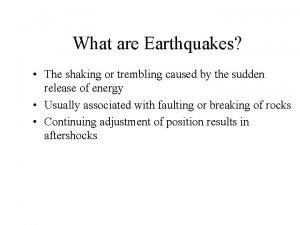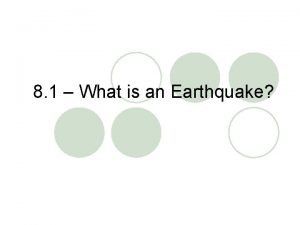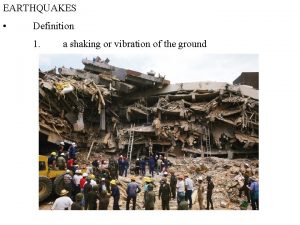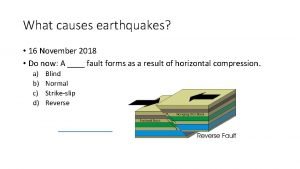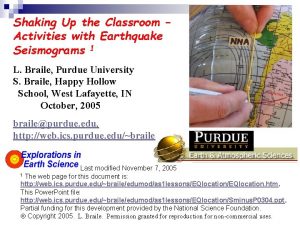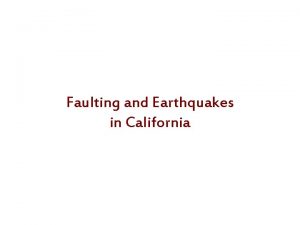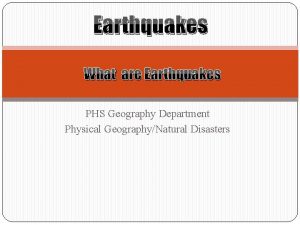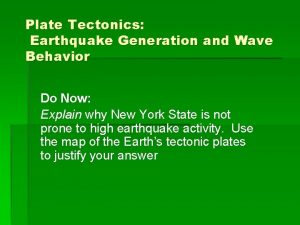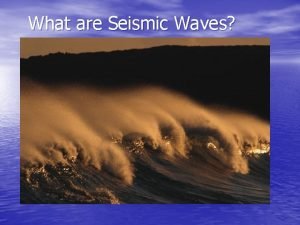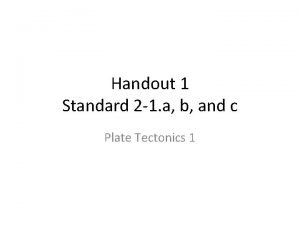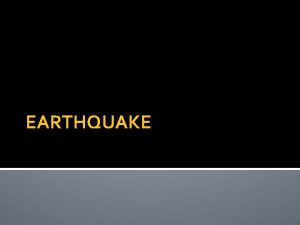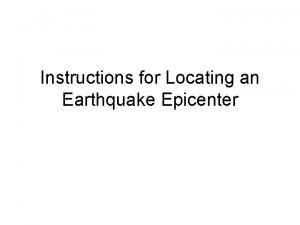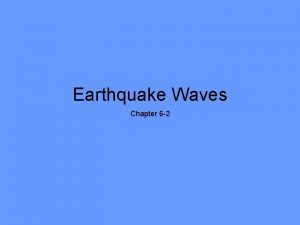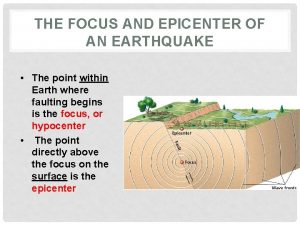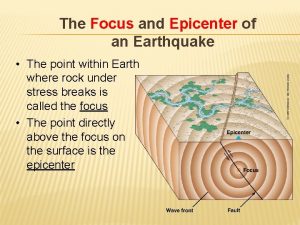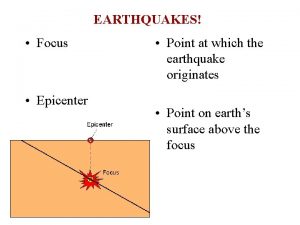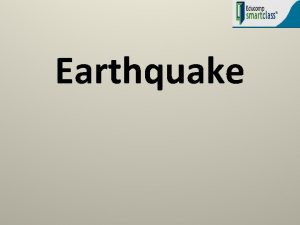Earthquake Waves Chapter 6 2 Focus and epicenter
















- Slides: 16

Earthquake Waves Chapter 6 -2

Focus and epicenter Actual location of fault Up to 700 km below surface

Focus and epicenter Surface location directly above the focus Actual location of fault Up to 700 km below surface

P-waves Primary waves - Compression waves - Travel in a horizontal direction - First to arrive at a distant location

S-waves • Secondary waves - vibrate at right angles to p-wave - particles move back and forth but wave moves forward - second to arrive at distant location

Surface Waves • Surface waves - travel parallel to Earth’s surface - have greatest height - move like an ocean wave - last to arrive at distant location - are responsible for damage

Locating Epicenter • Time lag between P-wave and S-wave indicate how far the earthquake is from a seismograph station. Lag Time

Locating Epicenter • The lag time tells us how far we are from an earthquake but not from which direction Epicenter can be any where on radius of the circle

Locating Epicenter • At least ____ seismograph stations are needed to pinpoint the epicenter of an earthquake Infinite number of possible epicenters

Locating Epicenter • At least ____ seismograph stations are needed to pinpoint the epicenter of an earthquake Possible epicenter Two seismograph stations narrow possible epicenters down to two Possible epicenter

Locating Epicenter • At least three seismograph stations are needed to pinpoint the epicenter of an earthquake epicenter Three epicenters narrows possible locations down to one

DEMO

Measuring Earthquakes • Mercalli Scale - rates earthquake according to level of damage at a given location - 12 steps to scale - same earthquake can have different rating at different locations

Measuring Earthquakes • Richter Scale - rates earthquake’s magnitude based on size of seismic waves - works well with small, nearby quakes - waves are measured by a seismograph

Measuring Earthquakes • Moment Magnitude Scale - estimates the total energy released by an earthquake - can rate all earthquakes - scientists look at type and strength of waves, amount of movement, and strength of rocks that broke

Video • Click here
 Focus and epicenter of an earthquake
Focus and epicenter of an earthquake Quizizz
Quizizz Focus and epicenter of an earthquake
Focus and epicenter of an earthquake What are the factors of earthquake
What are the factors of earthquake Epicenter of earthquake
Epicenter of earthquake Earthquake epicenter
Earthquake epicenter Earthquake epicenter
Earthquake epicenter Loma prieta earthquake epicenter map
Loma prieta earthquake epicenter map Tilting
Tilting Shallow focus earthquake
Shallow focus earthquake Type of earthquake waves
Type of earthquake waves Seismic waves
Seismic waves Compare and contrast p waves and s waves using venn diagram
Compare and contrast p waves and s waves using venn diagram Porter's competitive strategies
Porter's competitive strategies Cost leadership strategy
Cost leadership strategy What waves do not require a medium
What waves do not require a medium Mechanical and electromagnetic waves similarities
Mechanical and electromagnetic waves similarities
